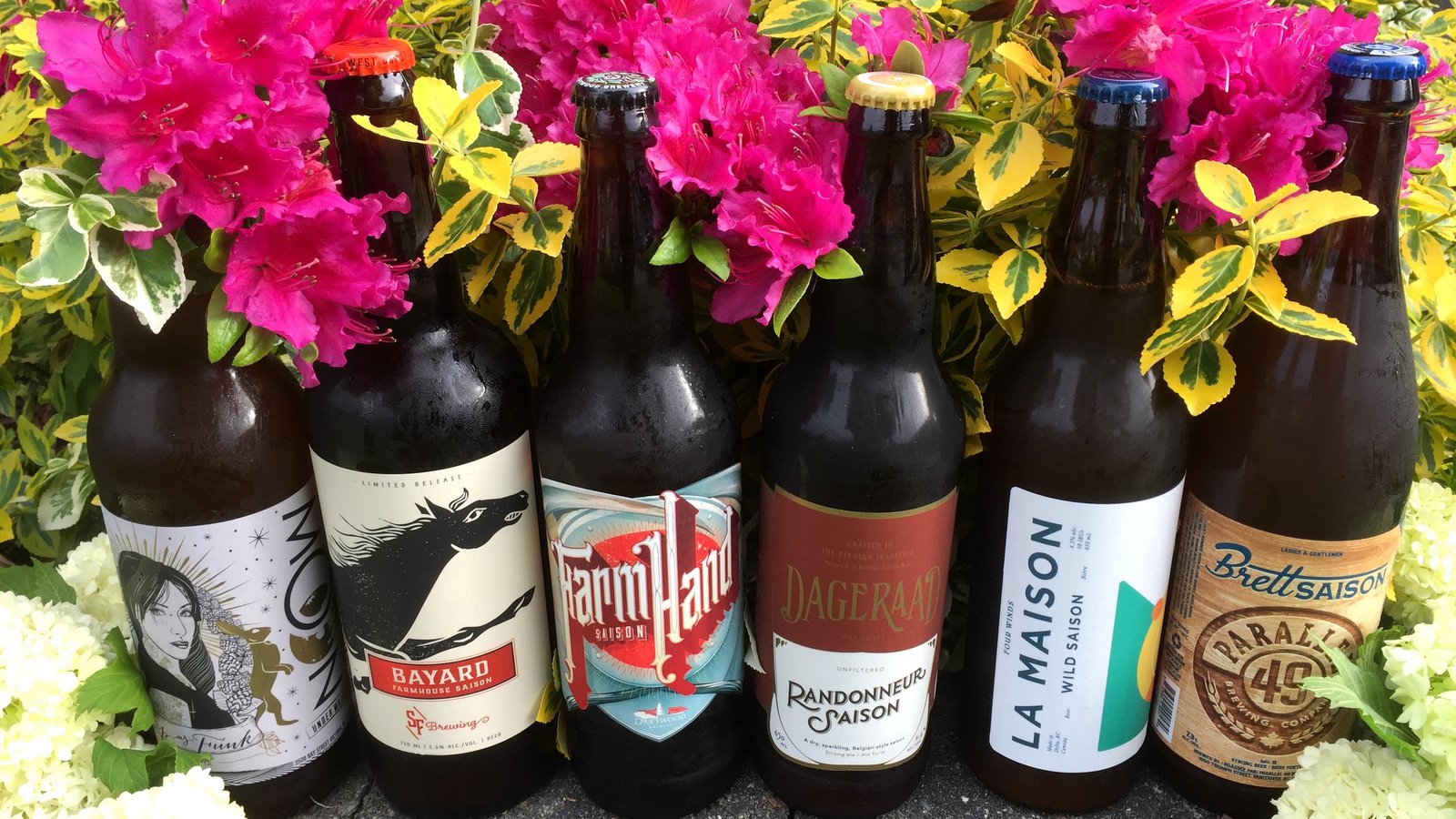
Homebrew Happenin’s
Summer is the season for saisons
Traditionally, saison is a rustic, artisanal ale made with local farm-grown ingredients. This beer would be brewed for consumption during the active farming season by the French-speaking farmers in Belgium. A typical table saison would be around 5% ABV, a tavern version could be as high as 7%, and special saisons can reach as high as 9.5%, though the stronger versions are a more modern interpretation.
Because these beers were made from whatever happened to be on hand, it was not unusual to have grains such as wheat, rye, oats, or spelt in the grist bill. Sugar or honey could be added to provide complexity and dry out the flavour. English or European hops were most commonly used. Spices and herbs could also find their way into these ales.
Comparatively, this beer resembles a Belgian blonde ale with higher attenuation, more hop presence, and a stronger yeast character.
In North America, we often refer to saisons as farmhouse ales. The beer tends to be refreshing, dry, highly attenuated, and highly carbonated.
Most saison yeasts ferment at higher temperatures than standard ale yeasts. To get the unique yeast character, start fermentation at a normal ale temperature, 18 to 20 degrees C, and ramp the temperature up to as high as 35 degrees C. You may want a larger starter than normal.
Some more common commercial saison yeasts are White Labs WLP 565 Dupont or Wyeast 3724 Dupont 1,Wyeast 3522 Ardennes, and Wyeast 3711 Bertus. There are several others available, like 3463, 3725, or 3726.
As these yeasts are quite happy to work away at temperatures as high as 35 degrees C, this is the perfect beer to make during the summer months if you don’t have fermentation temperature control.
The Dupont yeasts are well known for stalling out during fermentation. It is believed that this is caused by back pressure from the CO2 being produced and an airlock or blow off tube. Replacing the airlock with a piece of tinfoil crimped over the top of your carboy should eliminate the issue, or you can just be patient and wait it out.
The grain bill for a saison should use mainly lighter base malt with small amounts of caramel malts for balance. You can add raw grains, malted wheat, flaked barley, or other adjuncts. Adding table sugar or other fermentable sugars is quite common and will help create a drier beer.
I intend to brew a saison this summer. This recipe is only a guideline for the beer I will make. I had an interesting conversation with Dave Henry from Full Barrel homebrew club, who told me about his recent saison brew, and it made a ton of sense to me. Instead of measuring out ingredients for a recipe worked out in advance, he simply eyed out the ingredients adding a bit of this and a bit of that by the handful. This is right up my alley; I often decide to make a beer and just work with what I have on hand. Those of you who may not have the experience to know what 10 pounds of malt looks like, or are scientific in your brewing, can follow this recipe, which is the one I will keep in the back of my head when brewing my saison.
This recipe is for 20 litres of a mid-strength saison, aiming for 6.5% to 7% ABV.
Diviner Saison
- 10.5 pounds Pilsner malt
- 1 pound wheat malt
- 0.75 pound Munich light
- 0.5 pound flaked rye
Mash at 148 to 150 degrees F for 60 to 90 minutes. Collect a bit more into the kettle that you normally would, as you may want to boil for 90 minutes to ensure DMS has been driven off.
Add 1.75 ounces of 3.9% Hallertau for 60 minutes and 0.75 ounces at flame out. IBU target is 24.
Chill to 64 degrees F and pitch with White Labs 565 or Wyeast 3724. Ramp up temperature over the first day or two to end up at 95 degrees F. (I will be brewing when the weather will provide the warm temperature.) Fit a tinfoil cover instead of an airlock to prevent back pressure. When terminal gravity has been reached (could be below 1.010), bottle, and condition for up to three months. You may want to add a bit more priming sugar than usual to ensure a lively sparkling level of carbonation. Just a bit, though; we don’t want any bottle bombs.
This is an all-grain recipe but you could very easily add table sugar to increase the strength, or swap out some sugar for a bit of the base malt. You can add coriander or black pepper for another level of complexity. As this style has a fairly wide set of parameters, there is plenty of room for playing around, so have fun with it.
Cheers. Now go make some saison!
This Post Has 0 Comments